Showing Spotlights 625 - 632 of 2779 in category All (newest first):
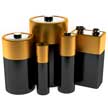 For the most part, advances in energy storage will rely on the continuing development of materials science, pushing the limits of performance of existing battery materials and developing entirely new battery structures and compositions. The battery industry is already working to reduce the cost of lithium-ion batteries, including by removing expensive cobalt from their positive electrodes. Researchers also are looking at the possibilities of using two-dimensional materials, essentially extremely thin sheets of substances with useful electronic properties.
For the most part, advances in energy storage will rely on the continuing development of materials science, pushing the limits of performance of existing battery materials and developing entirely new battery structures and compositions. The battery industry is already working to reduce the cost of lithium-ion batteries, including by removing expensive cobalt from their positive electrodes. Researchers also are looking at the possibilities of using two-dimensional materials, essentially extremely thin sheets of substances with useful electronic properties.
Oct 4th, 2018
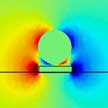 Researchers have developed a new type of optical manipulation method to achieve versatile manipulation of objects with different sizes and types using optical heating. In this new technique, nanoparticles get trapped at temperature hot spots instead of electrical hot spots, which demonstrates a different working mechanism and approach from the traditional optical manipulation techniques. Due to this unique working principle, stable trapping of large metallic nanoparticles and miniscule quantum dots on single nanoantennas with extremely low optical power is achieved.
Researchers have developed a new type of optical manipulation method to achieve versatile manipulation of objects with different sizes and types using optical heating. In this new technique, nanoparticles get trapped at temperature hot spots instead of electrical hot spots, which demonstrates a different working mechanism and approach from the traditional optical manipulation techniques. Due to this unique working principle, stable trapping of large metallic nanoparticles and miniscule quantum dots on single nanoantennas with extremely low optical power is achieved.
Oct 3rd, 2018
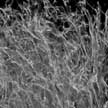 Investigating the potential of DNA to form self-assembled injectable hydrogels via physical crosslinking with silicate nanodisks, researchers have utilized DNA as a high molecular weight polymeric chain in order to form hydrogel networks for tissue regeneration and drug delivery applications. They have designed shear thinning hydrogels, which can be passed through a 22-gauge syringe by taking advantage of the native chemical structure of DNA and its specific base pairing interactions.
Investigating the potential of DNA to form self-assembled injectable hydrogels via physical crosslinking with silicate nanodisks, researchers have utilized DNA as a high molecular weight polymeric chain in order to form hydrogel networks for tissue regeneration and drug delivery applications. They have designed shear thinning hydrogels, which can be passed through a 22-gauge syringe by taking advantage of the native chemical structure of DNA and its specific base pairing interactions.
Sep 24th, 2018
 Nanomaterials can improve the properties of food contact materials. Innovations of this kind are of particular interest for food packaging made out of plastic materials. The purpose of their use is to improve food storage and so to guarantee both freshness and quality. A further goal is to improve the technical properties of materials in order to make them sturdier more resistant to abrasion, and easier to process. With regard to environmental protection, little is known at present about the specific behavior of nanomaterials and composites during waste treatment processes.
Nanomaterials can improve the properties of food contact materials. Innovations of this kind are of particular interest for food packaging made out of plastic materials. The purpose of their use is to improve food storage and so to guarantee both freshness and quality. A further goal is to improve the technical properties of materials in order to make them sturdier more resistant to abrasion, and easier to process. With regard to environmental protection, little is known at present about the specific behavior of nanomaterials and composites during waste treatment processes.
Sep 20th, 2018
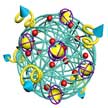 Development of an effective approach for delivering a new drug is as important as inventing a new drug. Even if a developed new drug has excellent pharmacokinetic and therapeutic properties, it shows its potential activity in the body effectively only when it is exactly targeted to specific molecules. Various nanotechnological approaches for effective drug delivery have been developed and some of them have already been successfully commercialized. Most prominent nano drug delivery systems that are in market place are oncology related and based on liposomal, solid nanoparticle based, protein polymer conjugates and polymer-drug conjugate based delivery platforms.
Development of an effective approach for delivering a new drug is as important as inventing a new drug. Even if a developed new drug has excellent pharmacokinetic and therapeutic properties, it shows its potential activity in the body effectively only when it is exactly targeted to specific molecules. Various nanotechnological approaches for effective drug delivery have been developed and some of them have already been successfully commercialized. Most prominent nano drug delivery systems that are in market place are oncology related and based on liposomal, solid nanoparticle based, protein polymer conjugates and polymer-drug conjugate based delivery platforms.
Sep 18th, 2018
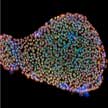 Researchers have developed a way to achieve an ultra-high bioelectric signal from human embryonic stem cells using direct current-voltage measurements facilitated by few-layered 2D molybdenum disulfide sheets. This method, which produces cell signals 2 orders of magnitude higher than previous electrical-based detection methods, paves the way for the development of a broadly applicable, fast, and damage-free stem cell detection method capable of identifying pluripotency with virtually any complementary metal-oxide-semiconductor circuits.
Researchers have developed a way to achieve an ultra-high bioelectric signal from human embryonic stem cells using direct current-voltage measurements facilitated by few-layered 2D molybdenum disulfide sheets. This method, which produces cell signals 2 orders of magnitude higher than previous electrical-based detection methods, paves the way for the development of a broadly applicable, fast, and damage-free stem cell detection method capable of identifying pluripotency with virtually any complementary metal-oxide-semiconductor circuits.
Sep 17th, 2018
 Black phosphorus (BP or phosphorene), a novel two-dimensional semiconducting material, has gained tremendous attention because of its intriguing properties, such as ON/OFF ratio, high carrier mobility, and tunable direct band. However, a fundamental obstacle hindering practical applications is the lack of stability under ambient conditions. Now researchers demonstrated both excellent photoelectrochemical performance and significantly improved stability based on tin monosulfide nanosheets. These findings hold great potential for practical applications of phosphorene analogue nanomaterials-based devices.
Black phosphorus (BP or phosphorene), a novel two-dimensional semiconducting material, has gained tremendous attention because of its intriguing properties, such as ON/OFF ratio, high carrier mobility, and tunable direct band. However, a fundamental obstacle hindering practical applications is the lack of stability under ambient conditions. Now researchers demonstrated both excellent photoelectrochemical performance and significantly improved stability based on tin monosulfide nanosheets. These findings hold great potential for practical applications of phosphorene analogue nanomaterials-based devices.
Sep 13th, 2018
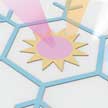 Recently developed concepts in photonic designs and meta- and nanomaterials have improved the effectiveness of passive radiative coolers that function in the daytime. Whereas all of these radiative coolers are white or silver in color, researchers have now presented concepts and strategies for daytime radiative cooling systems that offer aesthetically desirable colors and patterns. These device not only emit infrared waves effectively under a clear sky, but also displays vivid colors.
Recently developed concepts in photonic designs and meta- and nanomaterials have improved the effectiveness of passive radiative coolers that function in the daytime. Whereas all of these radiative coolers are white or silver in color, researchers have now presented concepts and strategies for daytime radiative cooling systems that offer aesthetically desirable colors and patterns. These device not only emit infrared waves effectively under a clear sky, but also displays vivid colors.
Sep 6th, 2018
 For the most part, advances in energy storage will rely on the continuing development of materials science, pushing the limits of performance of existing battery materials and developing entirely new battery structures and compositions. The battery industry is already working to reduce the cost of lithium-ion batteries, including by removing expensive cobalt from their positive electrodes. Researchers also are looking at the possibilities of using two-dimensional materials, essentially extremely thin sheets of substances with useful electronic properties.
For the most part, advances in energy storage will rely on the continuing development of materials science, pushing the limits of performance of existing battery materials and developing entirely new battery structures and compositions. The battery industry is already working to reduce the cost of lithium-ion batteries, including by removing expensive cobalt from their positive electrodes. Researchers also are looking at the possibilities of using two-dimensional materials, essentially extremely thin sheets of substances with useful electronic properties.
 Subscribe to our Nanotechnology Spotlight feed
Subscribe to our Nanotechnology Spotlight feed





